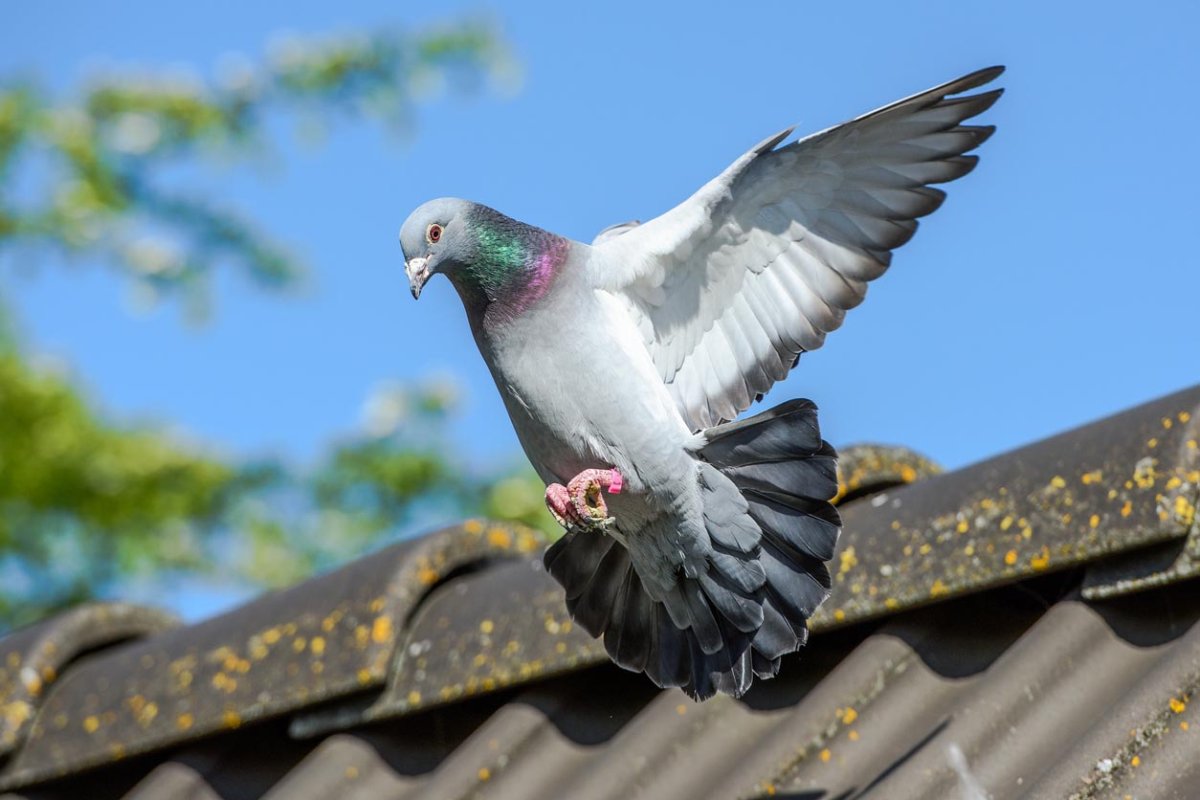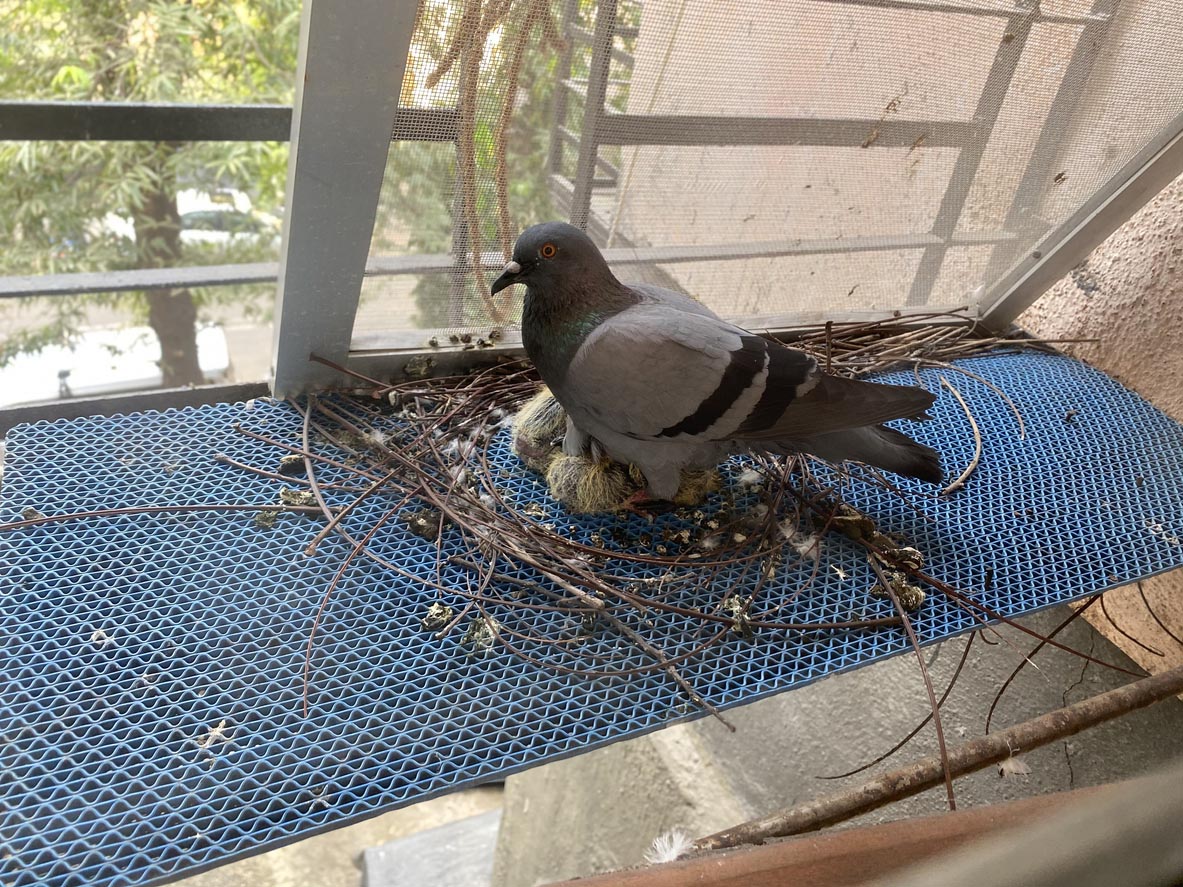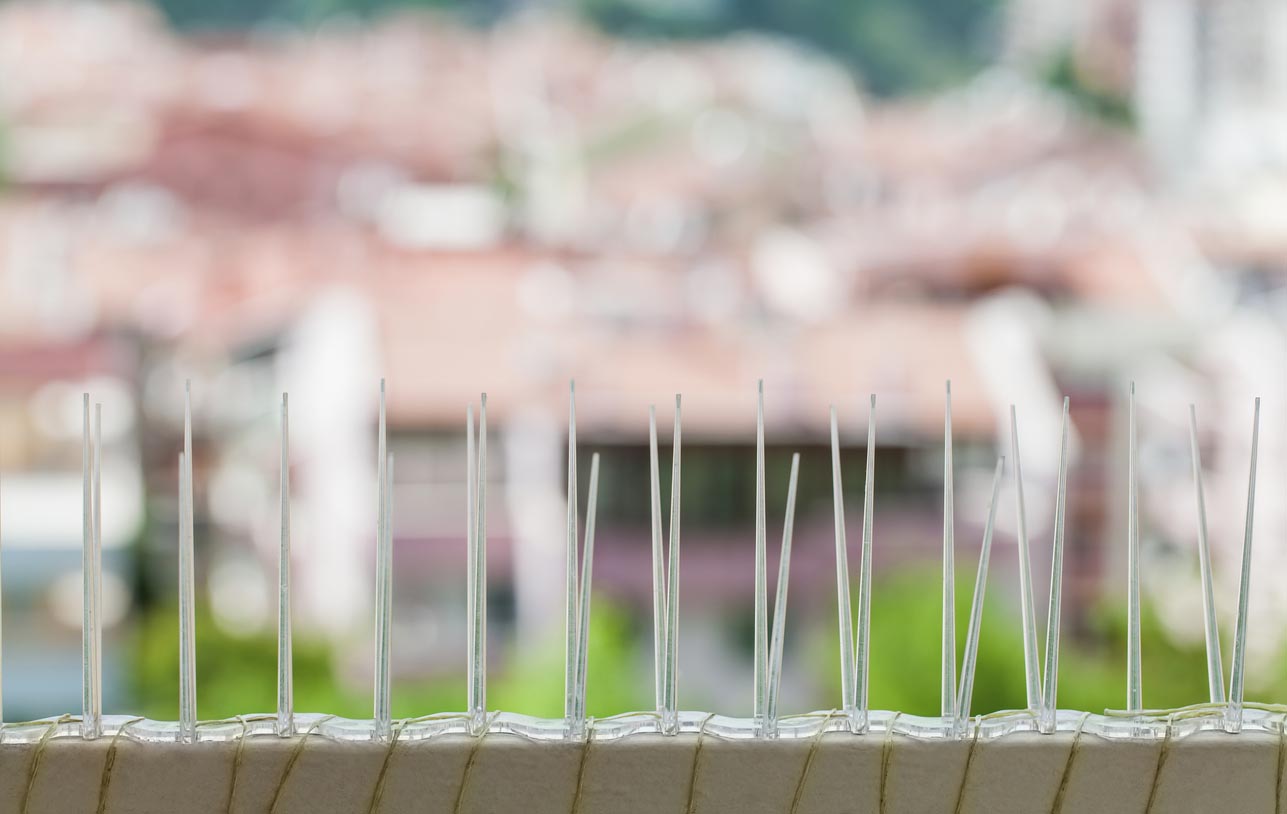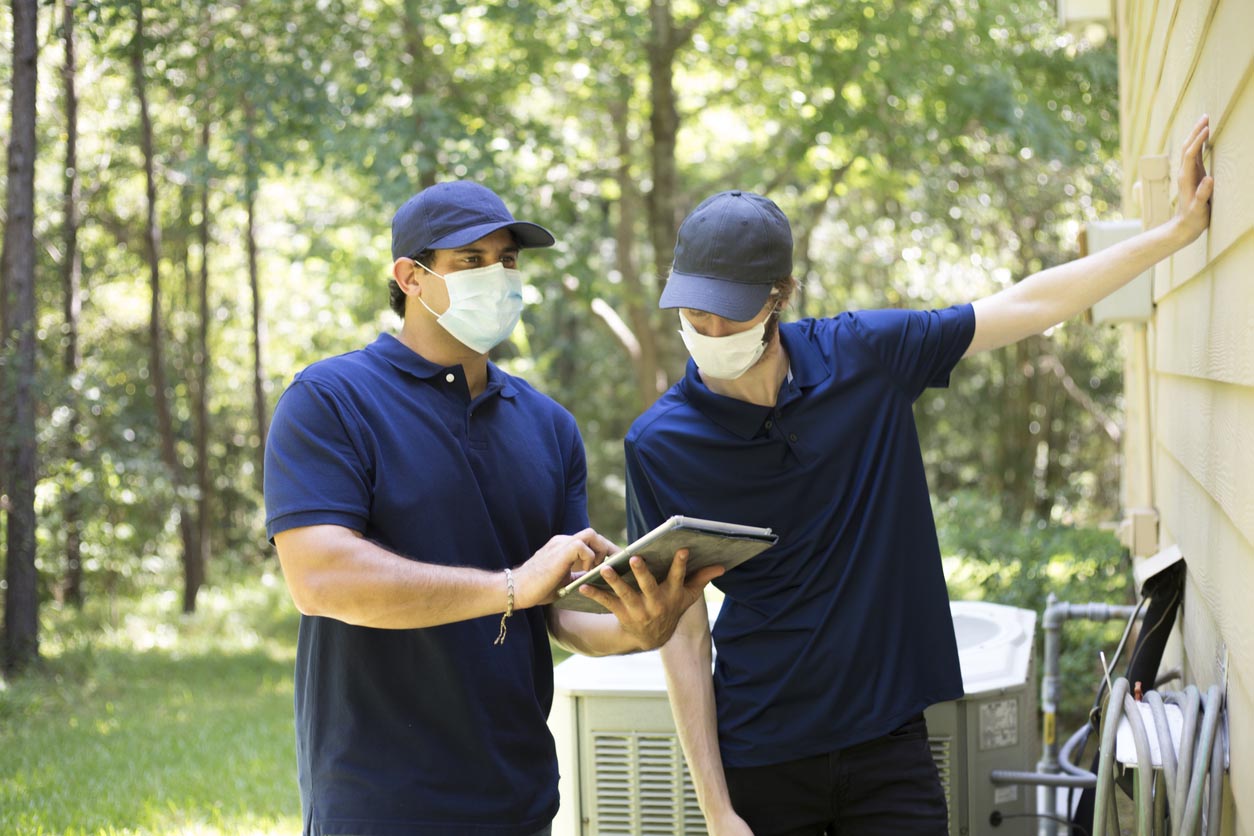

We may earn revenue from the products available on this page and participate in affiliate programs. Learn More ›
While pigeons are well known for living in cities, they’ll find their habitats anywhere. And whether you have an outdoor space that’s acres large or just a tiny balcony, you’ll likely receive visits from pigeons from time to time. A few pigeon coos or some droppings on your driveway may not be a huge concern. But if those harmless visits are turning into a constant nuisance, like excessive noise or cars coated in droppings, and you need to know how to deter pigeons, the steps below provide plenty of solutions to this problem.
So how do you get rid of pigeons? Start by eliminating any access to food sources, then follow up with deterrents that prevent them from landing or nesting near your home. It sounds simple, but if the problem of how to get rid of pigeons becomes too overwhelming, it may be best to call in the help of a professional from one of the best pest control companies that also offer wildlife control (depending on your location, Orkin or Terminix can be top options).
Time required: 1 to 3 hours
Difficulty: Beginner
Estimated cost: $10 to $30
Tools & Materials
Bobvila.com may earn a commission from purchases made through these links.
Before You Begin…

When wondering how to keep pigeons off your roof or how to keep pigeons off a balcony, it’s important to note that although they may seem harmless, pigeons can pose more of a problem than you may initially think. Pigeons are communal creatures, and large gatherings can cause excessive noise. Pigeon droppings are relatively acidic, and they can eat away at roofing materials and car paint if not removed. Plus, pigeon droppings can obscure a home’s solar panels, meaning that the solar panels can’t work as efficiently.
Droppings can also spread disease, and exposure to the birds could cause illness, especially in those who are immunocompromised. Pigeons themselves can carry a variety of parasites, such as ticks. If you have a significant pigeon problem, it may be worth contacting a professional who can use the proper tools and techniques to keep the birds away. It may even help to call an expert for advice before you invest time and money into various DIY methods—what may seem like a minor issue to you could be a larger-scale problem that definitely requires a pro’s help. Talking to a professional first can help you determine the full scope of the pigeon problem and what exactly will be needed to fix it.
Tips for Getting Rid of Pigeons
- Remove or secure any potential food sources, such as trash cans or compost receptacles.
- Apply bird spikes, netting, and reflective tape or shock strips, and set up a faux owl or hawk figure near the spot they frequent most.
Safety Considerations
- If the pigeons leave a significant number of droppings around the home, exposure could cause illness.
- Before attempting to trap or remove a pigeon from the inside of the home, it’s wise to contact an exterminator or animal control specialist first.
STEP 1: Clean up your home’s exterior and secure trash cans.
The first step to successful pigeon removal is examining the outside of the home to ensure no food sources are easily accessible. This means securing trash cans, recycling bins, or compost receptacles so you can get rid of pigeons who may be feasting on your leftover food scraps. Removing any platters, plates, or serving utensils leftover from grilling or eating outside is also helpful in keeping pigeons from coming back. Cleaning up these areas has the added benefit of keeping other pests or wildlife away, too. Once these familiar sources of food for birds are eliminated, make sure all other household members understand the importance of keeping outdoor areas free of food or food containers. This will keep pigeons from considering your home a viable food source.

STEP 2: Keep pigeons from nesting.
Pigeons can nest in various places around your home, from roofs to rafters, balconies, garages, outdoor sheds, attics, and ledges. To keep the birds from making themselves at home, you can place bird spikes along surfaces or edges where they’re likely to land. These large, thin spikes stick up and should be put close together to be effective. If the prongs are too far apart, pigeons can still nest in between them. These spikes may look dangerous, but they’re relatively dull and flexible and are meant to make a surface uncomfortable for a bird, not to injure. Shock strips, which give pigeons a slight buzz when they land, offer another nest prevention method to teach pigeons that your home is not a welcome roosting spot. You can also use bird netting to enclose a small outdoor space such as a balcony or patio to keep the birds from coming in. Secure the mesh tightly to ensure the birds can’t find an opening.
STEP 3: Seal any potential entrances to the home.
Pigeons are intelligent animals, and when it comes time for them to seek shelter from potential predators or extreme weather, they may look for entrances into your safe and cozy home. It’s essential to seal any areas that may look appealing to pigeons to keep them from getting inside; be sure to inspect your attic to identify potential areas that may provide access to the small birds. Silicone caulk is a simple solution to sealing small spaces, while hardware cloth or bird netting can block bigger entrances. This may also be a good time to call in a roofing contractor if any significant repairs need to occur. A secure roof will not only keep pigeons out, but it will also keep your home safe from other wildlife in inclement weather conditions.

STEP 4: Apply repellents and place deterrents.
Chemical and natural repellents, such as gel solutions, can get rid of pigeons by making it unpleasant for them to land on the surface the gel is placed on. They also work by creating a barrier between the birds and the surface, which decreases the number of pheromones they leave behind—fewer pheromones mean not as many pigeons will be attracted to the area in the future. These gels also aren’t harmful to the birds.
If you’re searching for how to scare pigeons away, reflective tape is an option that can irritate or disorient birds to keep them away. Reflective tape is beneficial on small balconies or patios. Reflective discs hanging from trees or overhangs provide another diversion by distracting birds’ vision and making it hard for them to land.
Hawks and owls are natural predators of pigeons, so deterrents such as realistic-looking hawk or owl figures can also scare off pigeons. This method can be even more effective if you reposition the figure twice a day to give the illusion of movement.
STEP 5: Place traps for any pigeons that have entered the home.
If any pigeons enter your home, the priority will need to shift from pigeon prevention to pigeon removal. In this situation, a pigeon trap is your best bet in getting the bird or birds out of your home. It’s advised to place traps in the areas the birds will most likely assemble and lure them near with fresh food and water. Note that this may not be an immediate solution and could take several days before the birds are trapped. Once they are trapped, follow the guidelines of your city or region to determine how you should dispose of or release the birds. Because this method can be time-consuming and sometimes dangerous, it may be best to contact an exterminator or pest control specialist who can eradicate the issue in less time and with less of a threat to your safety.

STEP 6: Seek professional pigeon removal.
Whether you have a few persistent visitors or an entire flock, it may be best to enlist the help of an exterminator or animal control specialist who can use their experience and knowledge to assess the situation and put the appropriate pigeon removal measures in place. If you’ve tried a few tactics on your own and still have regular visits from pigeons, the problem may be too big for you to handle. Experts will know how to safely and successfully remove pigeons, how to keep pigeons away, and how to stop the pigeons from returning in the future.
If you’re looking for the best way to get rid of pigeons, the steps above outline several tools and techniques that have proven to be successful. However, calling a professional can alleviate the strain if the problem has become too much for you to handle or you don’t have the time and energy to enact DIY methods. You may be searching for answers on how to get rid of pigeons on your roof, and an expert will have access to equipment and tools to remove them humanely and effectively.
